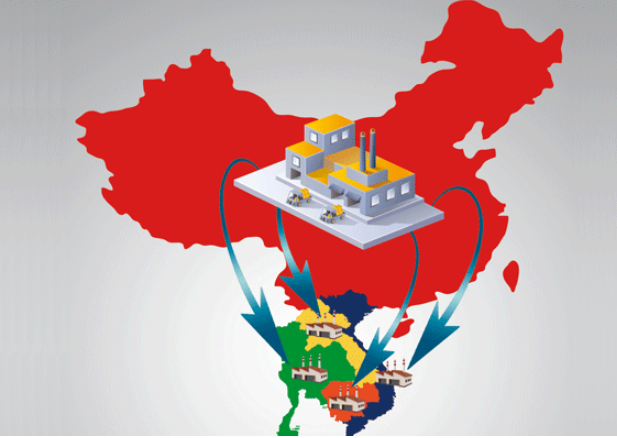With groundbreaking supply chain changes hitting the headlines, it begs the question: what’s it going to take for reshoring to stick?
Corporations, businesses, and the public alike continue to reorient and remodel themselves in a post-pandemic climate. Moreover, geopolitical events around the world continue to shape the corporate landscape. One trend, particularly brought to light by the pandemic, is the shift from globalization to regionalization. Increasingly more countries – and by extension, companies operating in these territories – are seeking methods to regionalize parts of their supply chain and overall production.
Apple isn’t the only company that has announced its plan to relocate suppliers and production away from China. Well-known multinationals including Google, Hasbro, and Nike, among many others are beginning to look to reshoring as the path to streamline their supply chain. Analysts are not currently coming to a consensus about how long this seismic shift will take; however, it is almost unanimously agreed that companies around the world will begin relying less and less on China.
Read below as we discuss the main considerations surrounding supply chain management in today’s post-pandemic landscape.
Supply Chain Switching Costs
Making significant changes to an existing and (usually) long withstanding supply chain is no easy feat. There are supply chain switching costs that need to be taken into account. With the emergence of ESG as a corporate responsibility, an new and indirect cost to any company’s supply chain is the environmental footprint associated with its production and distribution.
For instance, the EU recently announced that it will be taxing carbon at its borders. Countries within the EU, as well as those outside may be pushed to do so in the coming years as well. Alongside the carbon footprint and its new taxation, we can only expect more tangible costs to be added to an organization’s supply chain costs.
At the macro level, the concept of free trade is being put into question around the globe. Economists and analysts state that the world is slowly but surely transitioning from globalization to regionalization – a trend that was heightened by the pandemic and continues to be pertinent as economies and countries re-emerge. The question now becomes how this shift will shape markets and industries in the years and decade to come. Furthermore, it is known that large corporations are usually the first to adapt to the ever changing business landscape. If regionalization forces new supply chain management norms, what does this mean for global corporations? Better yet, how does this impact businesses that operate on a smaller scale but still have relationships and ties on an international level?
Diversifying Risk
Inevitably, retracting production from China entirely is both unrealistic and impractical. That being said, many companies are starting to adopt a china plus one strategy – maintaining existing relationships with suppliers and brick-and-mortar facilities in addition to establishing production or supplier relations in additional countries. This strategic move not only diversifies risk, but also opens the door for future strategic endeavors.
Alternatives for Sourcing
Choosing to retract production from one country is one thing; deciding where to allocate said production is another. There are several alternatives that are being examined for potential reshoring potential.
India
India is growing – so much so that its population is on the path to surpass China’s. According to the UN, India is set to become the most populous country in the world. Consequently, the country’s infrastructure is growing; the country as a whole is modernizing significantly, both from a production point of view as well as a cultural shift. With a lot of resources and a growing pool of expertise, analysts deem India as a valid reshoring alternative. Apple is one of the companies capitalizing on this trend; the technology giant has already moved some of its production to certain states in India and plans to continue doing so in the coming years. JPMorgan analysts predict that 25% of the iPhone production will be located in India by 2025.
The downside here is that, unlike China, India does not possess the same level of governmental coordination. This is due to the fact that India’s decision making power lies at the regional level – each province dictates production state-by-state. As such, this imposes a complexity and a variety of different governmental rules that inflicts burdens on manufacturing and production. Decision-making could also be delayed due to the extensive bureaucracy that may exist both on a corporate and political front. As long as companies can minimize the cross-border movement when converting raw materials to finished goods, they can reap the benefits of utilizing India as a producer.
Vietnam
North American and European companies can also consider Vietnam as a viable source for supplier and production reshoring. First, the country possesses government incentives for companies wishing to establish business relations with suppliers, manufacturers, and producers in the country. Vietnam realized over a notable amount – $31 billion USD – in foreign-direct-investment pledges in 2021 alone, and analysts expect this sum to increase in the coming years.
Vietnam is also strategically positioned geographically: it has a large coastline which lends itself well to international water transport. This is especially pertinent since the country seems to be in a promising position with respect to free trade agreements FTAs in a world that might be abandoning these arrangements. Furthermore, the labor costs are also reasonable – analysts state the average to be comparable to those in China. The one drawback that has been identified is that due to the country still emerging in its economy and manufacturing, there is less supplier density with the same consistency in production as China.
SE Asia
According to research, Penang is fertile ground for manufacturers in the consumer electronics and medtech markets as of right now. Companies such as Intel Electronics and Micron have invested into building state of the art production facilities in the Malaysian city. Furthermore, Malaysia has attracted over several dozen projects relocating production from China in the past few years. The products manufactured by these types of companies are products essential both to other businesses and end consumers alike. By investing in Southeast Asia, large corporations and middle-market manufacturers can manage the down-cycle of the overall industry and leverage their respective industries. This is especially the case for consumer electronics given that these products are used on a daily basis and revolve around data.
Where Modularity Fills the Gap
The need for companies around the globe to continue diversifying their supplier network and production does exist – more so now than ever. That being said, navigating these uncharted territories singlehandedly would be both unproductive and a fruitless use of time, resources, and money. This is where Modularity comes in. With Hans Brenner’s years of on the ground experience, we are best suited to provide consulting and expertise in South East Asia. Modularity consults middle-market manufacturers in North America to enable reshoring, minimize switching costs, and establish mutually beneficial trading partners as supply chain management continues to evolve. Get in touch with our team to learn more.




